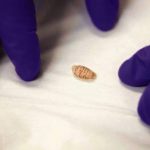A year and a half ago, Dr. Jaco Nel was playing with his dog Harvey, a coker spaniel, when he noticed a small scratch on his hand.
He cleaned and disinfected it and went about his usual chores. But two weeks later he became ill with what looked like the flu.
He had no idea then what was about to happen: a bacterium in his spaniel’s saliva caused an infection that triggered septicemia, an overreaction of the immune system to an infection.
Septicemia is the world’s leading cause of death from infection .
Nel did not die, but says he was “very, very close.”
As a result of his septic shock, he spent five days in a coma and months in the hospital, before losing both legs below the knee, all the fingers of one hand, and suffering a disfigurement of his nose and lips. difficulties speaking and eating
Nel’s case is very extreme but real, like that of the 20 million people who suffer from septicemia a year in the world.
Now this Briton lives with the serious consequences of what seemed like a simple scratch, as he explained to the BBC’s Victoria Derbyshire program, where he spoke to publicize the disease and to help himself overcome what happened to him.
“I felt depression and anger”
Nel didn’t realize how sick he was because feeling sick, like he had the flu, went to sleep until the next day.
“I must have gotten very sick because I felt confused, disoriented. I did not listen to the phone when they were looking for me when I was absent from work, ”the doctor told the BBC program.
“At the end of the day, my partner came home and found me in a terrible state,” he recalls.
“He called the emergency services and they were great: they immediately realized it was septicemia and started treating me urgently right there.”

Caption, Nel lost consciousness and was in a coma for four or five days.
An early diagnosis is key to recovery from septicemia: according to several studies , 80% of cases can be treated favorably if diagnosed within the first hour. But if not, with each passing hour the risk of death increases.
Nel received intravenous fluids already in her own home and antibiotics in the ambulance on the way to the hospital.
“But when I got to the emergency room, I collapsed,” he recalls.
Nel lost consciousness and was in a coma in the intensive care unit for four to five days.
And when I woke up I was shocked to see that my entire body was practically black: my face, hands, legs, due to tissue damage caused by abnormal blood clotting, which is something that passes through the septic shock, “he told the BBC.
“My kidneys failed and I also had dialysis for two months,” he added.
“It was a very hard period,” he says after a great sigh as he remembers the details.
“I knew from almost the beginning that I would end up losing my legs and fingers, but I wasn’t sure what would happen to my face.”
“And in the end I lost the tip of my nose and my lips have scars, I find it difficult to speak and I also have difficulties eating, although now I cope better.”
“After four months in the hospital, my legs were amputated.”
Learn to walk again
“I was always a determined person, nothing stops me,” he said. But he admits that he had very low moments when he thought that what was happening to him was too much.
“I felt deeply depressed, I felt anger and at times I thought I could not bear it,” he recalled.
But over time, he got on with the key support of his friends, family, and work colleagues.

Caption, Sepsis or septicemia occurs when the immune system becomes overloaded and exaggerates its response to an infection.
“Those thoughts left when I began to see that I could do things again, even if it took more time and effort.”
“I think my faith and the desire to go back to work and get my life back also helped me move forward.”
Shortly after the amputation of her legs, Nel began rehabilitation to walk again.
“And after three months I was able to walk without help again and went home,” she said with a laugh almost incredulous at her own story.
Nel also had to make a tough decision: to euthanize her beloved pet Harvey , to prevent him from infecting another person, since the dog had an infection that he could not cure.
In hindsight, Nel believes there is nothing she could have done to prevent what happened to her.
When his dog scratched him and licked his wound he disinfected it.
Afterwards, no one noticed the symptoms of the disease that was beginning to manifest itself: “I was slurring my words when I spoke, I lost my coordination and balance, my skin was mottled … but no one saw it,” not even himself, as if to call for urgent medical help.
Now he can drive in an adapted car and he has a prosthetic nose with which his facial disfigurement is quite concealed.
But he says he no longer puts it on because he considers it a “mask” to hide his story.
Openly showing what happened to you, as now when talking to the BBC, is part of your own story of acceptance and improvement.


